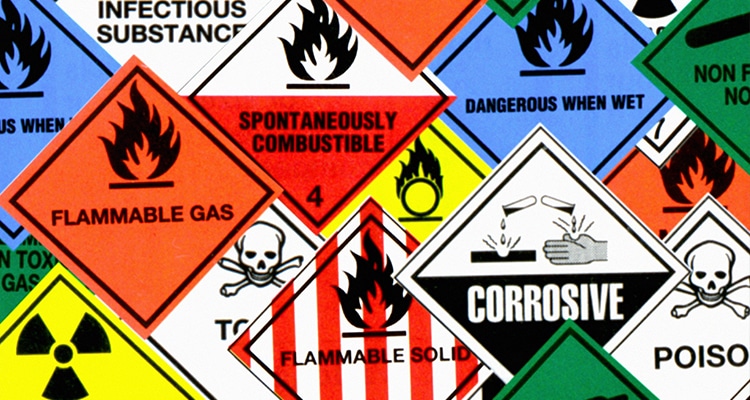Safe Shipping of Hazardous Materials
In previous articles, we discussed regulations for storing hazardous chemicals in facilities, including Safety Data Sheets (SDSs) and inventory lists. This month, we spotlight another critical aspect of using hazardous chemicals: transporting them.
The United States Department of Transportation (DOT) regulates the transportation of hazardous chemicals (49 CFR 172). The DOT estimates that due to undeclared hazardous materials being shipped, around 1,500 accidents occur each year. To reduce the risk to workers, emergency responders, and the public, the DOT’s regulations require that these materials are appropriately classified, packaged, labeled, handled, and stowed. They have also launched a “Check the Box” initiative to educate companies and individuals about the importance of proper shipping practices for hazardous materials.
The DOT classifies hazardous materials as posing high health, safety, and property risks when transported. Hazardous materials include substances that are flammable, explosive, or gases. Aerosols, lithium batteries, alcohols, paints and paint thinners, and even wood treatment products qualify as hazardous materials requiring specific shipment steps (check the DOT’s list of common hazardous materials here). To know if a specific item is considered hazardous and must conform to DOT’s hazmat regulations, consult the product’s Safety Data Sheet.
Chemical Safety Software’s SDS management system can help with this step. With your entire chemical inventory detailed in the SDS system, you can quickly find the SDS for any chemical in your facility when it comes time to ship it.
Once you determine a product is considered hazardous, consult the transportation section of the SDS. This section should include information like an ID number, shipping name, and hazard class.
Next, you should use this information and consult the Hazardous Materials Table, which will help you transport the substance properly, including choosing the appropriate packaging for your shipment. Some packages may require performance packaging, which is designed to reduce the risk of shipping hazmat.
The next step is to use the DOT hazmat marking guide to label your package appropriately. You may also be required to prepare a shipping paper. Luckily, Chemical Safety Software’s Bill of Lading program allows you to easily generate all the required paperwork to meet DOT regulations.
Lastly, notify the shipping service that your shipment contains hazardous material when you present it to them.
One extra requirement to remember is that employees who prepare hazmat items for shipment must complete specific training on how to do so safely. This training can occur online or in person and can be obtained from a third-party distributor. Your company can also self-train and certify your own employees to meet this requirement.
Check back next month, when we will continue to focus on the appropriate shipping of hazardous materials and examine IATA Lithium Battery regulations.



